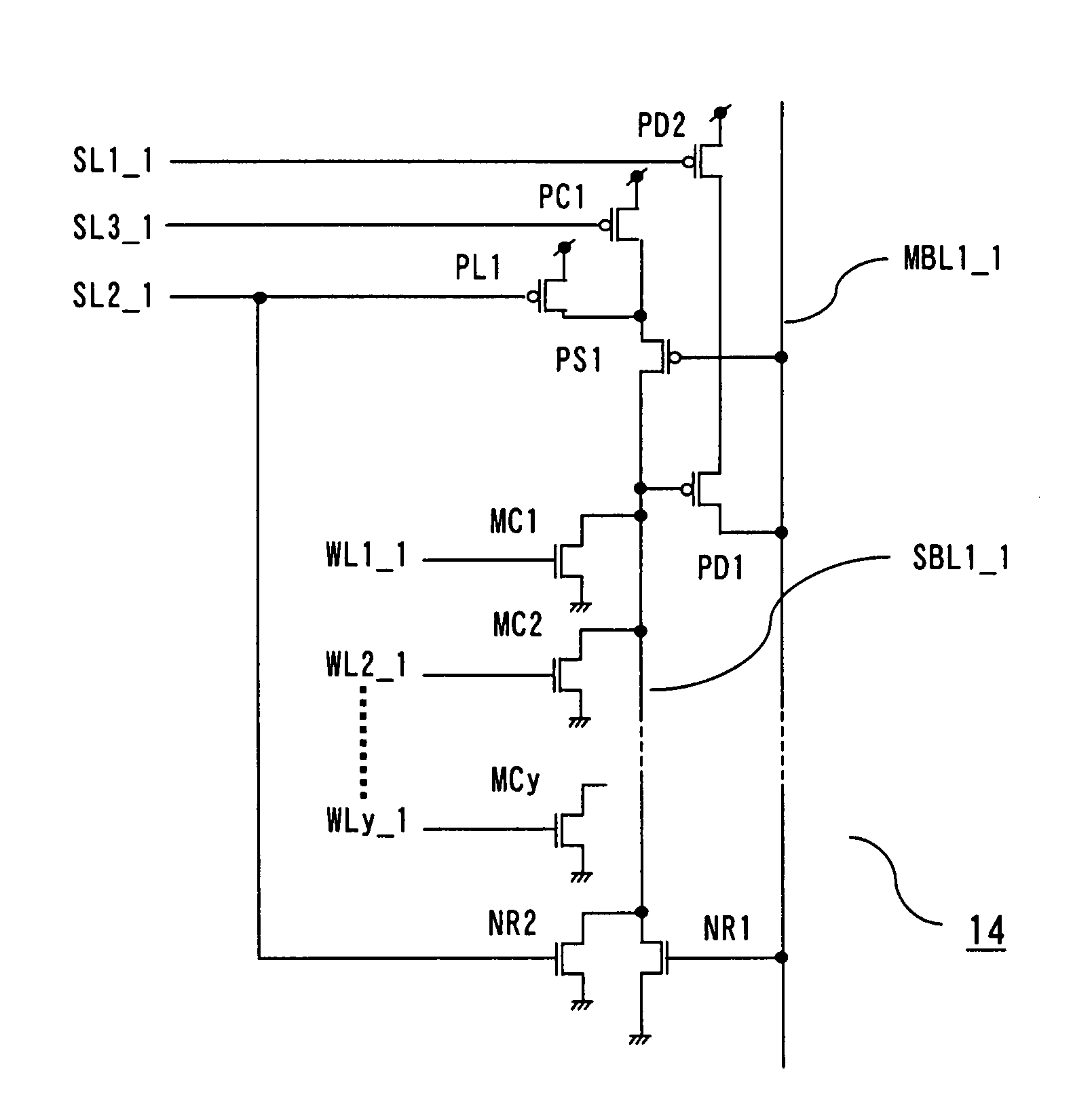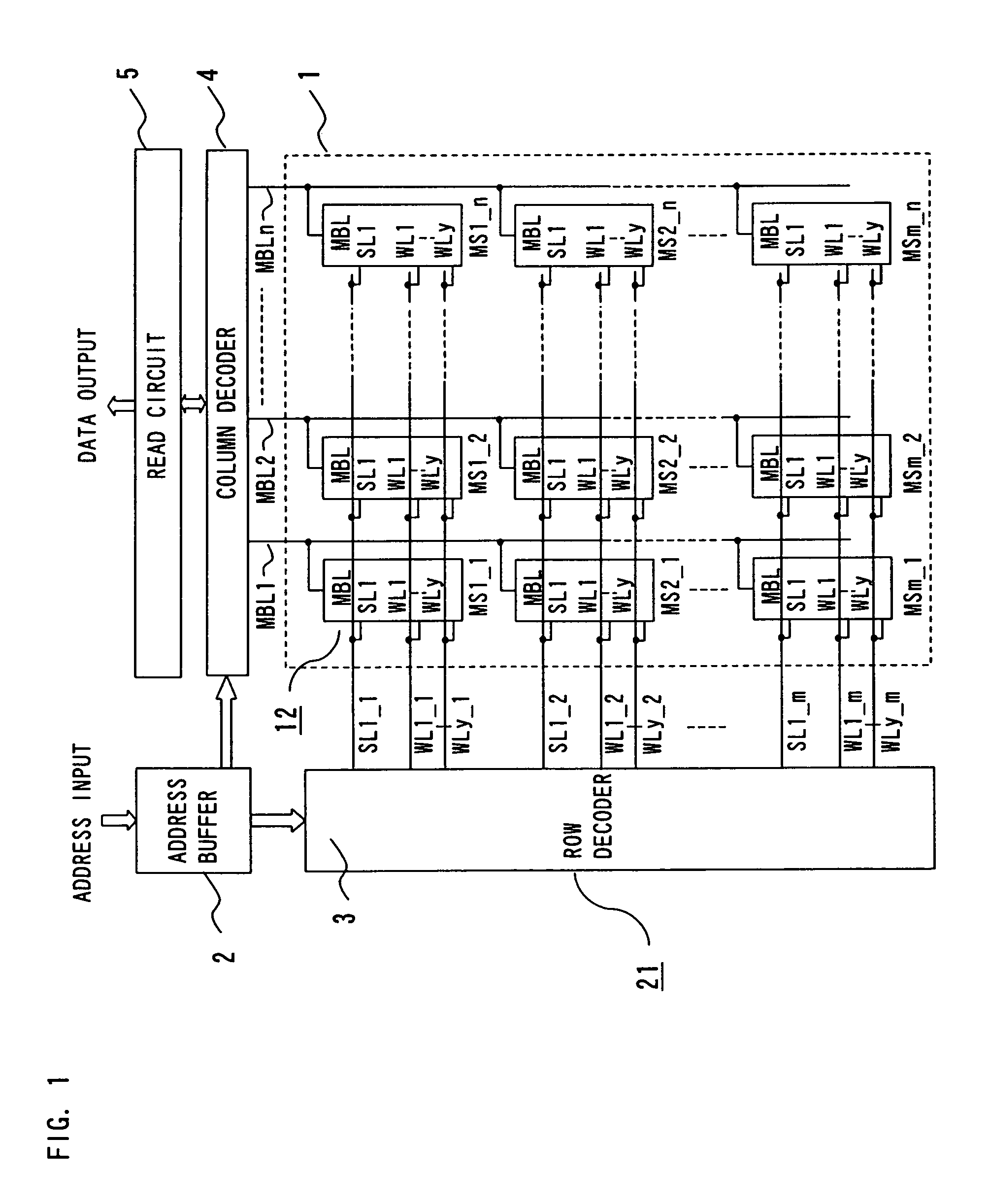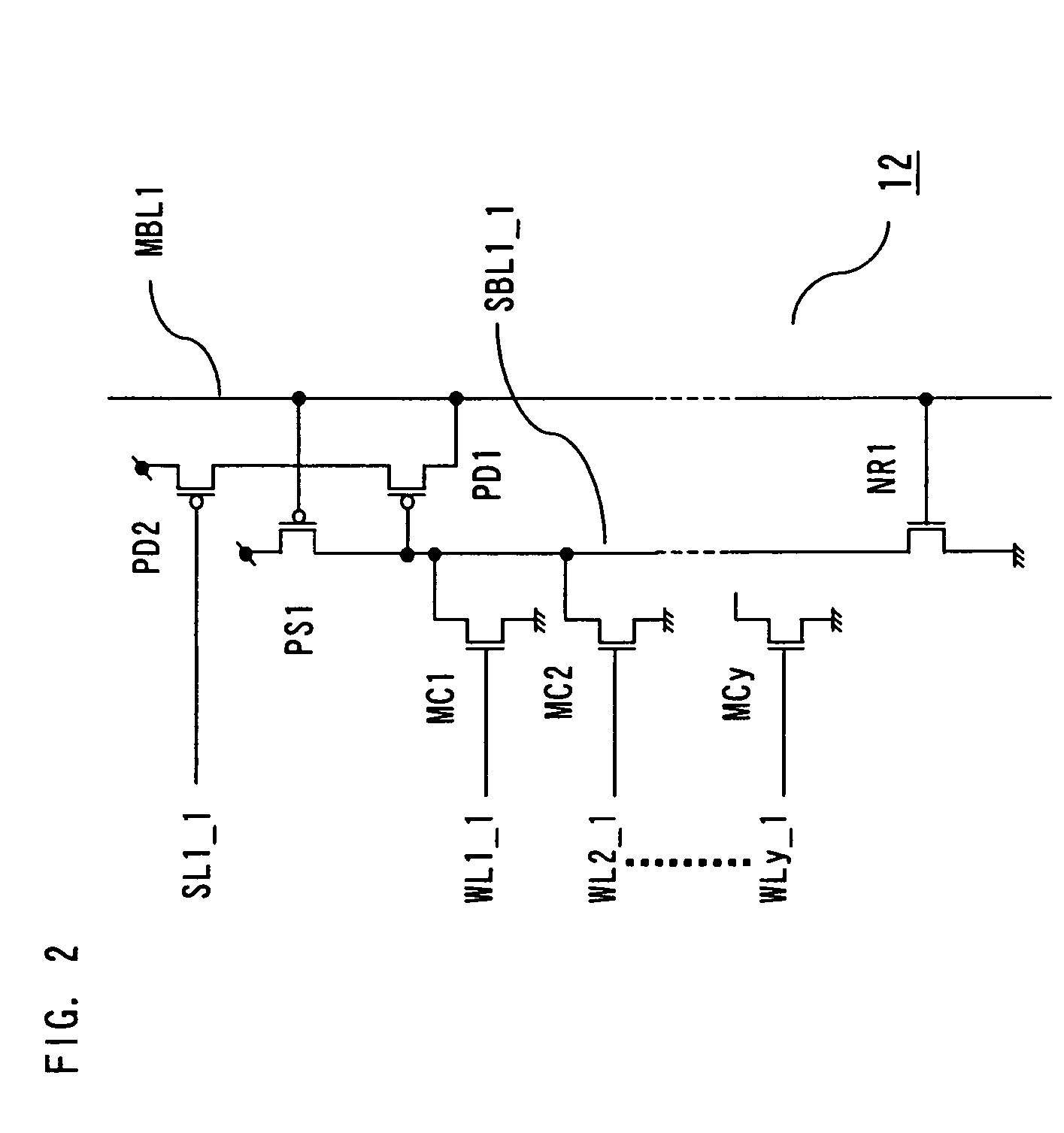Semiconductor memory device
a memory device and semiconductor technology, applied in the field of semiconductor memory devices, can solve the problems of increasing the manufacturing cost of a semiconductor memory device, the inability to perform high-speed pre-charge, and the inability to read out stored data at high speed, so as to achieve cost advantages
- Summary
- Abstract
- Description
- Claims
- Application Information
AI Technical Summary
Benefits of technology
Problems solved by technology
Method used
Image
Examples
first embodiment
[0061]FIG. 1 is a block diagram illustrating a configuration of a semiconductor memory device according to a first embodiment of the present invention. The semiconductor memory device 21 comprises a memory cell array 1, an address buffer 2, a row decoder 3, a column decoder 4, and a read circuit 5.
[0062]The memory cell array 1 includes (m×n) subarrays 12 (MS1_1 to MSm_n) arranged in a matrix, m block select lines SL1_1 to SL1_m, (y×m) word lines WL1_1 to WLy_m, and n main bit lines MBL1 to MBLn. The subarrays 12 (MSi_1 to MSi_n) provided on an i-th row are each connected to the block select line SL1_i and the word lines WL1_i to WLy_i. The subarrays 12 (MS1_j to MSm_j) provided on a j-th column are each connected to the main bit line MBLj.
[0063]The address buffer 2 outputs an externally input address to the row decoder 3 and the column decoder 4.
[0064]Based on the address signal output from the address buffer 2, the row decoder 3 selects one block select line (e.g., SL1_i) from the ...
second embodiment
[0093]FIG. 4 is a block diagram illustrating a semiconductor memory device according to a second embodiment of the present invention. The semiconductor memory device 22 comprises a memory cell array 6, an address buffer 2, a row decoder 7, a column decoder 4, and a read circuit 5. Note that the address buffer 2, the column decoder 4, and the read circuit 5 are configured in a manner similar to that of the first embodiment and will not be hereinafter described.
[0094]The memory cell array 6 includes (m×n) subarrays 13 (MS1_1 to MSm_n) arranged in a matrix, m first the block select lines SL1_1 to SL1_m, m second block select lines SL2_1 to SL2_m, (y×m) word lines WL1_1 to WLy_m, and n main bit lines MBL1 to MBLn. The subarrays 13 (MSi_1 to MSi_n) provided on an i-th row are each connected to the first block select line SL1_i, the second block select line SL2_i, and the word lines WL1_i to WLy_i. The subarrays 13 (MS1_j to MSm_j) provided on a j-th column are each connected to the main ...
third embodiment
[0121]FIG. 7 is a block diagram illustrating a configuration of a semiconductor memory device according to a third embodiment of the present invention. The semiconductor memory device 23 comprises a memory cell array 8, an address buffer 2, a row decoder 9, a column decoder 4, and a read circuit 5. Note that the address buffer 2, the column decoder 4, and the read circuit 5 are configured in a manner similar to that of the first embodiment, and will not be hereinafter described.
[0122]The memory cell array 8 includes (m×n) subarrays 14 (MS1_1 to MSm_n) arranged in a matrix, m first block select lines SL1_1 to SL1_m, m second block select lines SL2_1 to SL2_m (not shown), m third block select lines SL3_1 to SL3_m, (y×m) word lines WL1_1 to WLy_m, and n main bit lines MBL1 to MBLn. The subarrays 14 (MSi_1 to MSi_n) provided on an i-th row are each connected to the first block select line SL1_i, the second block select line SL2_i, the third block select line SL3_i, and the word lines WL...
PUM
 Login to View More
Login to View More Abstract
Description
Claims
Application Information
 Login to View More
Login to View More - R&D
- Intellectual Property
- Life Sciences
- Materials
- Tech Scout
- Unparalleled Data Quality
- Higher Quality Content
- 60% Fewer Hallucinations
Browse by: Latest US Patents, China's latest patents, Technical Efficacy Thesaurus, Application Domain, Technology Topic, Popular Technical Reports.
© 2025 PatSnap. All rights reserved.Legal|Privacy policy|Modern Slavery Act Transparency Statement|Sitemap|About US| Contact US: help@patsnap.com



